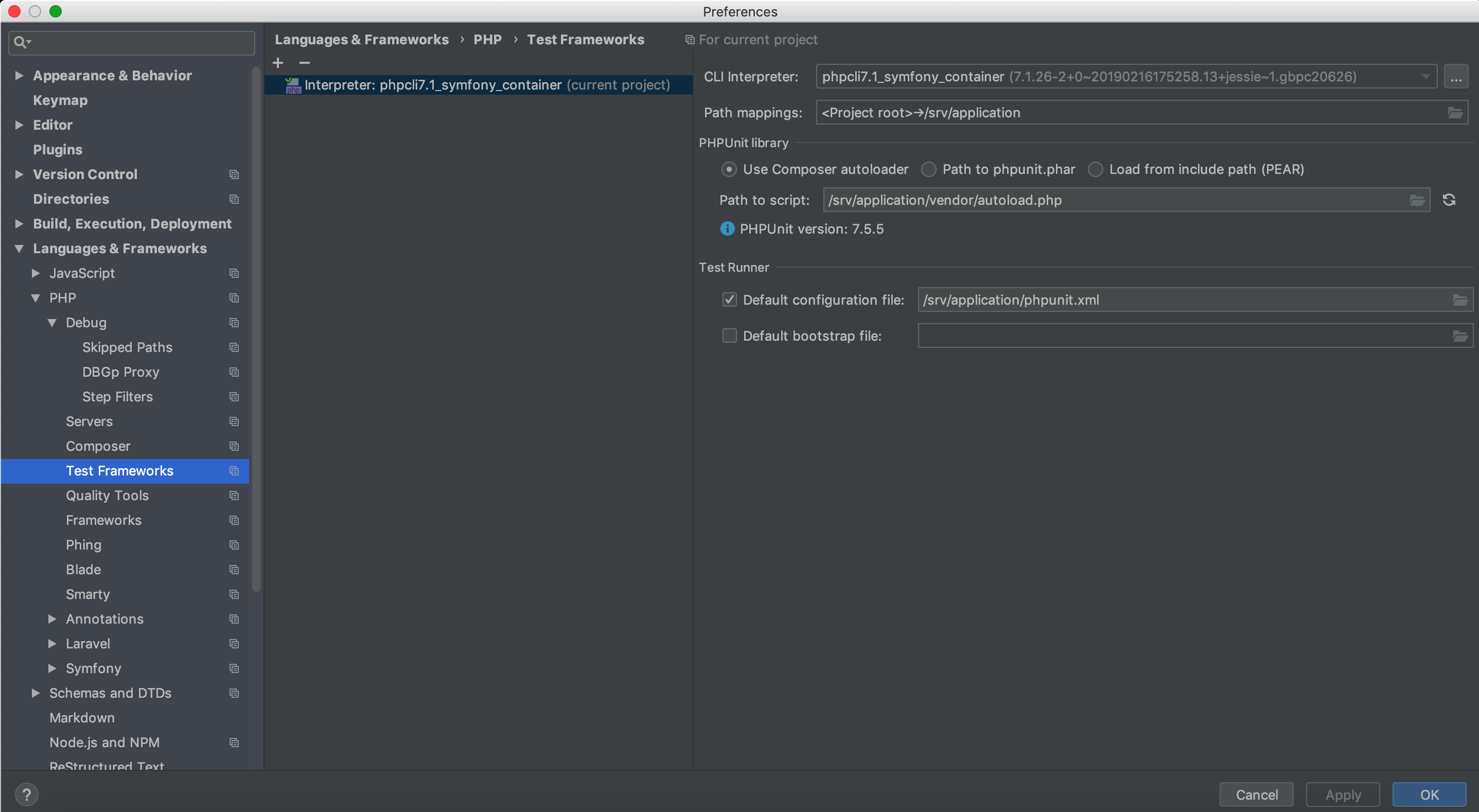

XDEBUG_CONFIG: client_host=192.168.1.2 # This is for XDebug 3. # Set the XDEBUG_CONFIG as described here: xdebug # a path to a directory containing a Dockerfile, or a URL to a git repository. Your docker-compose.yml file can look like this now: version: '3.8'ĭockerfile: Dockerfile # this line is actually redundant here - you need it only if you want to use some custom name for your DockerfileĬontext. And I often use this setup for local development. But actually, it is pretty straightforward.
Phpstorm docker xdebug windows#
Please notice: If your WordPress project is located in a folder on your macOS or Windows computer and shared to an Ubuntu virtual machine using Oracle VirtualBox Guest Additions, and if your project is running inside a Docker container on that virtual machine, your Dockerfile could be a little bit more complicated. # We set this IP via XDEBUG_CONFIG environment variable in docker-compose.yml instead. This is the IP of your host machine, where your IDE is installed. # the default port for XDebug 3 is 9003, not 9000 # Also, for PhpStorm, configuration tips could be found here: Your folder files-to-copy will contain a subfolder usr/local/etc/php/conf.d/ with the file xdebug.ini: # Parameters description could be found here: The branch xdebug_3_1 of XDebug is compatible with PHP of the image wordpress:6.0.1-php8.1-apache.īut if, for example, you tried to use the image wordpress:6.0.1-php8.1-apache with the branch xdebug_3_0 of XDebug, you would get the following error while building the image:Ĭhecking Check for supported PHP versions… configure: error: not supported. Please notice: In the Dockerfile above you need to use compatible versions of XDebug and PHP. To build on some particular version of the image. Or you can add the tag you need (like we added 6.0.1-php8.1-apache above). To build on the latest version of the image wordpress. In this Dockerfile, you can replace the first line with e.g.

# works here, and we can use it to enable xdebug: # the helper script docker-php-ext-enable (defined for image `php`) # and since `wordpress`, in turn, extends the official Docker image `php`, # Since this Dockerfile extends the official Docker image `wordpress`, # Copy xdebug.ini to /usr/local/etc/php/conf.d/ # Available branches of XDebug could be seen here:
Phpstorm docker xdebug install#
# Install XDebug from source as described here: XDebug 3įor XDebug 3, the Dockerfile of the cloned project will look like this: FROM wordpress:6.0.1-php8.1-apache
Phpstorm docker xdebug code#
Please notice: The easiest way to understand all this and start working with the code is to clone this project from GitHub. XDebug 2 – the previous version of XDebug.Works both with PHP 8 and with some versions below it, e.g.



 0 kommentar(er)
0 kommentar(er)
